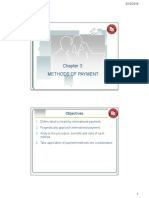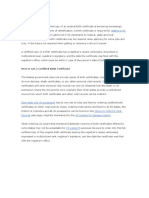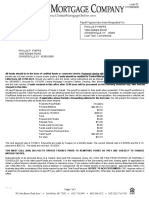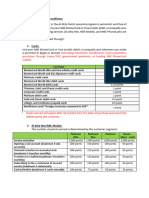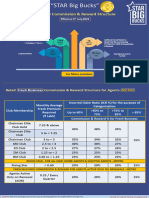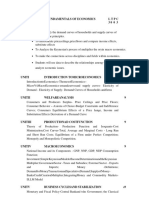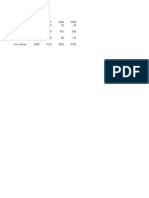5/1/2023
Chapter 5
METHOD OF REMITTANCE
METHOD OF REMITTANCE
* Objective: to help learners:
• Explain the remittance process with the
participation of related parties.
• Analyze the advantages and disadvantages
of remittance method, assess the risks of
related parties in this method.
• Apply this payment method effectively in
practice.
1
� 5/1/2023
METHOD OF REMITTANCE
* Content:
5.1. Definition of remittance method.
5.2. Remittance process
5.3. Forms of remittance
5.4. Remittance operations: Outward remittance
and inward remittance
5.5. Application of remittance method: Advance,
Open account and CAD (sight) payment.
5.6. Notes on method of remittance.
5.1. DEFINITION OF REMITTANCE METHOD
- International payment method in foreign trade means the
entire process of implementing regulations for buyer to
make payment and receive goods, for seller to deliver
goods and receive payment as required in the foreign trade
contract through banking system.
- English and Vietnamese term: Method of remittance/
Remittance method (Phương thức thanh toán chuyển tiền/
Phương thức chuyển tiền).
- The remittance method in international payments is the
payment method in which the entity wishing to make
remittance requests their bank to transfer a certain amount of
money within a certain period of time to the beneficiary in
another country.
2
� 5/1/2023
5.1. DEFINITION OF REMITTANCE METHOD
* Participants in remittance method:
- Remitter (Người chuyển tiền): the person who is responsible
for paying, and requesting the bank to transfer money abroad.
- Beneficiary (Người thụ hưởng): the person who receives the
transferred amount.
- Remitting Bank (Ngân hàng chuyển tiền): the bank that
provides payment services to the remitter.
- Paying Bank (Ngân hàng thanh toán): the bank that holds the
beneficiary's account, directly credits account and notifies the
beneficiary.
- Intermediary Bank (Ngân hàng trung gian): the bank that
participates in the payment process when remitting bank and
paying bank do not have a correspondent relationship or
cannot directly pay each other.
5.1. DEFINITION OF REMITTANCE METHOD
* Intermediary bank:
- No need for intermediary bank: If remitting bank and paying
bank have a correspondent relationship and can make
direct payment each other (the currency unit of Nostro/Vostro
account and of amount to make remittance are the same).
- Intermediary bank required: If remitting bank and paying bank:
+ Have no correspondent relationship, or
+ Have a correspondent relationship but cannot make direct
payment each other.
- Quantity of intermediary banks (more or less) depends on the
correspondent relationship between banks.
3
� 5/1/2023
5.2. REMITTANCE PROCESS
2. Payment
Remittting bank order Paying Bank
(NH chuyển tiền) (NH T.Toán )
1. Request
form for 2. Debit 3. Credit
remittane
Remitter Beneficiary
(Người (Người
chuyển tiền ) thụ hưởng)
5.3. FORMS OF REMITTANCE
- Telegraphic Transfer – T/T or Telegraphic Transfer
Remittance – TTR (Chuyển tiền bằng điện): Remitting bank
sends the payment order telegraphically (now mainly via
SWIFT system) to paying bank/ intermediary bank.
- Mail Transfer – M/T or Mail Transfer Remittance – MTR
(Chuyển tiền bằng thư): Remitting bank sends the payment
order by mail to paying bank/ intermediary bank.
- Bankdraft Remittance: Remitting bank makes remittance
by issuing a bankdraft (either directly issuing it or requesting a
branch/ correspondent of remitting bank in beneficiary's
country to issue it).
- Remittance via Western Union/ Money Gram: mainly used
for non-trading remittance between individuals. These two
organizations have agent networks in most places around the
world.
4
� 5/1/2023
5.4. REMITTANCE OPERATIONS
* Commercial banks divide remittance method into
two operations:
- Outward Remittance (Nghiệp vụ chuyển tiền đi)
is carried out when the bank's customer is the
remitter. The bank acts as the remitting bank.
- Inward Remittance (Nghiệp vụ chuyển tiền đến)
is carried out when the bank's customer is the
beneficiary. The bank acts as the paying bank.
* Both operations can be carried out by using four
above-mentioned forms of remittance.
5.4.1. OUTWARD REMITTANCE
Customer (NGHIỆP VỤ CHUYỂN TIỀN ĐI)
. Payment for trading transactions:
Remitting bank
. Payment in advance
. Payment after shipment
. Payment for non-trading transactions
Check documents
Agree:
. Customers with account
Process documents . Customers without account
. Disagree.
. Amendment/ Cancellation
Solve problems . Beneficiary does not receive payment
. Feedback from correspondent banks
. Feedback from the paying bank
File documents
5
� 5/1/2023
5.4.1. OUTWARD REMITTANCE
* Advance payment (buyer pays seller before seller makes
shipment), the required documents include :
+ Request form for remittance (Giấy đề nghị chuyển tiền).
+ Form for foreign currency purchase (if any)
+ Foreign trade contract (original and copy).
+ Import licence for goods (if any).
- Bank examines documents. If accepting, bank will stamp on
original contract and write the transferred amount on contract.
- Customer is required to commit in the request form for
remittance that customer has to submit additional documents,
including copy of the import customs declaration, commercial
invoice, and transport document (bring original import customs
declaration form for the bank to stamp and write the transferred
amount on the form). This helps ensure that the customer
complies with the purpose of remittance as stated previously.
5.4.1. OUTWARD REMITTANCE
* Later/ Deferred payment (after shipment) (buyer makes
payment after seller delivers goods and buyer has received
them), the documents includes: Request form for remittance,
Form for foreign currency purchase (if any), Foreign trade
contract (original and copy), Import licence for goods (if any),
Import customs declaration (original and copy), Commercial
invoice, Transport document.
- Note: Bank also stamps, writes the transferred amount on the
original contract and original import customs declaration,
returning them to customer.
- Remittance in advance is more difficult to control the purpose
of remittance than Remittance after shipment.
- The State Bank of Vietnam strictly monitors the purpose of
remittance, and SBV will inspects on this issue with penalties
for any violations of commercial banks.
6
� 5/1/2023
5.4.2. INWARD REMITTANCE
Remitting bank (NGHIỆP VỤ CHUYỂN TIỀN ĐẾN)
Paying bank . Forms of remittance
. Authentication of payment order
. Details of the beneficiary (customer)
Check payment order
. Debit Remitting / Intermediary bank acc.
. Credit beneficiary’s account
Process payment order
. Collect relevant fees
. Perform a review if necessary
Solve problems
. Receive message for amendment
. Receive message for cancellation
File documents
5.4. REMITTANCE OPERATIONS
* When carrying out outward and inward remittance
operations, the following issues should be noted:
- Most remittance operations nowadays are carried out
telegraphically (T/T or TTR) through the SWIFT system.
- According to SWIFT system, message types used in
remittance operation include: MT (Message Type) 103,
MT202, MT199, MT910, MT940, MT950. MT103 is the most
commonly used.
- Fees in remittance method: remittance fee, telegraphic fee,
and any additional fees such as amendment fee,... All fees
are based on bank’s fee schedule.
- There are 3 ways to determine who pays fees: remitter
pays all fees (OUR), beneficiary pays all fees (BEN), or fees
are shared between remitter and beneficiary (phí bên nào
nên đó chịu) (SHA).
7
� 5/1/2023
5.4. REMITTANCE OPERATIONS
- In the SWIFT system, various types of messages are formed
depending on the type of information used in the message.
- Each message type consists of many fields (trường), and the
content expressed in each field is standardized. Users must
follow regulations for each field so that when message is sent,
the system can understand it correctly and create content as the
users’ desire. Otherwise, a notification of error will be reported.
- MT103: the remittance message for at least one of two parties
transferring money (remitter) and receiving money (beneficiary)
is an individual or an economic organization. At present, MT103
is used most commonly in remittance operation.
- MT202: the remittance message that both receiving and
transferring parties are financial organizations.
- MT199: message for amendment/ checking of payment order.
- MT910: notice of credit for the benificiary’s account.
- MT940, MT950: detailed notice on the balance and
transactions of beneficiary’s account, used in inward remittance.
5.4. REMITTANCE OPERATIONS
* Fees to be shared between two parties (Phí bên nào bên đó
chịu) (SHA): all fees in remitter’s country are paid by remitter
(paid to remitting bank), while all fees outside remitter’s country
are paid by beneficiary (paid to intermediary and paying banks).
Therefore, remitting bank will collect fees from remitter and
make remittance for the original amount.
The amount sent by remitting bank = the original amount.
* Fees to be borne by beneficiary (Toàn bộ phí do người thụ
hưởng chịu) (BEN): remitting bank/ intermediary bank/ paying
bank will deduct fees from the sent amount.
The amount sent by remitting bank < the original amount.
This amount will decrease gradually as it reaches the
beneficiary's account.
8
� 5/1/2023
5.4. REMITTANCE OPERATIONS
* Fees to be borne by remitter (Toàn bộ phí do người chuyển
tiền chịu) (OUR):
- Based on the fee schedule of banks participating in remittance
process, remitting bank will calculate all fees charged by these
banks and collect the full amount from remitter.
- Remitting bank will deduct its own fee from the collected entire
fee, and transfer the original amount and remaining fees of
other banks. When money reaches every next bank, that bank
will deduct its own fee. Finally, the remaining amount which
reaches beneficiary's account will be the original amount.
- With the above method, the amount sent by remitting bank
> the original amount.
- SHA fee are the most commonly used in practice.
5.4. REMITTANCE MESSAGE OF MT103
MT103: Single customer credit transfer
Sender:
Receiver: the bank that has correspondent banking
relationship with remitting bank
20: Sender reference
26T: Transaction type code
32A: Value date, currency, interbank settled amount
33B: Currency/instructed amount
50K: Ordering customer-Name and address
56A: Intermediary
57A: Account with institution
9
� 5/1/2023
5.4. REMITTANCE MESSAGE OF MT103
59: Beneficiary customer - name and address
70: Remittance information
71A: Detail of charge:
OUR
BEN
SHA
71F: Sender’s charges
71G: Receiver’s charges
72: Sender to receiver information
5.4. REMITTANCE MESSAGE OF MT103
- Sender: The bank that sends the remittance
message (the remitting bank)
- Receiver: The bank that receives the remittance
message and has correspondent banking relationship
with remitting bank, which can be the paying bank or
the intermediary bank.
- Field 20. Sender reference: the reference number of
the message, used to track and manage documents.
- Field 26T. Transaction type code: the transaction
code that indicates the purpose of remittance.
10
� 5/1/2023
5.4. REMITTANCE MESSAGE OF MT103
- Field 32A. Value date, currency, interbank settled amount:
+ Value date (Ngày giá trị): the date of remittance (in
YYMMDD format).
+ Currency: the currency unit that is transferred.
+ Interbank settled amount: the actual transferred amount /
the actual amount settled between banks. This is the original
amount intended to transfer +/- fees, meaning the original
amount may be greater than/ less than/ equal to the actual
transferred amount depending on who pays the fees.
- Field 33B. Currency/ Instructed amount: the amount that
remitter requests remitting bank to transfer, which is the original
amount. The amount in this field may be the same or different
from the amount in field 32A depending on who pays the fees.
- Field 50K. Ordering Customer: Name and address of remitter.
5.4. REMITTANCE MESSAGE OF MT103
- Field 52A (52D): Ordering Institution: The bank that holds the
remitter’s account if it is different from the bank sending MT103
message. If the bank sending MT103 message is also the bank
that holds the remitter’s account, there will be no field 52A.
- Field 56A (56D): Intermediary Institution: The intermediary
bank (when there is no corresponding relationship between
remitting bank and paying bank).
- Field 57A (57D): Account with Institution: The bank that holds
beneficiary’s account if it is different from the bank receiving
MT103 message. If this field does not appear, it means that the
bank receiving MT103 message holds beneficiary’s account.
11
� 5/1/2023
5.4. REMITTANCE MESSAGE OF MT103
- Field 59. Beneficiary customer: Name, address, and account
number of beneficiary.
- Field 70. Remittance information: Information about the
content of remittance.
- Field 71A. Detail of Charges: indicates who is responsible for
the fees. There are three ways to show: OUR, BEN, and SHA,
and only these characters are used in this field.
- Field 71F. Sender’s charges: Fees charged by remitting bank,
reflecting specifically all fees that remitting bank charges.
- Field 71G.Receiver’s charges: Fees charged by the banks
receiving remittane message (paying bank and intermediary
banks), reflecting specifically all fees that paying bank and
intermediary banks charge.
- Field 72. Sender to receiver information: Information that the
sender wants to exchange with the receiver.
5.4. REMITTANCE MESSAGE OF MT103
- Sender: NH gởi điện chuyển tiền (NH chuyển tiền)
- Receiver: NH nhận điện chuyển tiền và có quan hệ
đại lý với NH chuyển tiền, có thể là NH thanh toán
hoặc NH trung gian.
- Trường 20. Sender reference: số tham chiếu của
điện chuyển tiền, dùng theo dõi và quản lý hồ sơ…
- Trường 26T. Transaction type code: mã giao dịch,
thể hiện mục đích chuyển tiền.
12
� 5/1/2023
5.4. REMITTANCE MESSAGE OF MT103
- Trường 32A. Value date, currency, interbank settled amount:
+ Value date (Ngày giá trị): là ngày chuyển tiền (theo dạng
YYMMDD)
+ Currency: loại tiền được chuyển.
+ Interbank settled amount: là số tiền thực chuyển / số tiền
thực sự được thanh toán cho nhau giữa các NH. Đây là số tiền
gốc ban đầu dự định chuyển +/– phí, tức là số tiền gốc này có
thể nhiều hơn/ ít hơn/ bằng với số tiền thực chuyển tùy thuộc
vào quy định phí do ai trả.
- Trường 33B. Currency/ Instructed amount: số tiền mà người
chuyển tiền yêu cầu NH chuyển tiền chuyển đi, tức là số tiền
gốc ban đầu. Số tiền ở trường này với số tiền ở trường 32A có
thể giống hoặc khác nhau tuỳ theo phí do ai trả.
- Trường 50K. Ordering Customer : tên và địa chỉ người
chuyển tiền.
5.4. REMITTANCE MESSAGE OF MT103
- Trường 52A (52D): Ordering Institution: NH nắm giữ tài khoản
người chuyển tiền trong trường hợp NH này khác với NH gởi
điện MT103. Nếu NH gởi điện MT103 cũng là NH nắm giữ tài
khoản người chuyển tiền thì sẽ không có trường 52A.
- Trường 56A (56D): Intermediary Institution: NH trung gian
(trường hợp NH chuyển tiền và NH thanh toán không có quan
hệ đại lý).
- Trường 57A (57D) Account with Institution : NH nắm giữ tài
khoản người thụ hưởng nếu NH này khác với ngân hàng nhận
điện MT103. Nếu trường này không xuất hiện thì có nghĩa là
NH nhận điện đang giữ tài khoản của người thụ hưởng.
13
� 5/1/2023
5.4. REMITTANCE MESSAGE OF MT103
- Trường 59. Beneficiary customer: tên, địa chỉ, số tài khoản
của người thụ hưởng
- Trường 70. Remittance information: thông tin về nội dung
chuyển tiền.
- Trường 71A. Detail of Charges: cho biết phí do ai trả. Có 3
cách quy ước: OUR, BEN và SHA và trường này chỉ thể hiện
các ký tự như vậy.
- Trường 71F. Sender’s charges: Phí của NH chuyển tiền, phản
ánh cụ thể các loại phí mà NH chuyển tiền thu.
- Trường 71G.Receiver’s charges: Phí của NH nhận điện hay
phí của NHTG và NHTT, phản ánh cụ thể các loại phí mà NH
thanh toán và NH trung gian thu.
- Trường 72. Sender to receiver information: Thông tin mà bên
gởi điện muốn trao đổi với bên nhận điện.
5.5. APPLICATION OF REMITTANCE METHOD
* In foreign trade activities, buyers and sellers can agree on
following payment forms:
- Advance payment form (Hình thức trả trước): buyer pays seller
before seller makes shipment, forming the advance payment
method (phương thức thanh toán trả trước/ ứng trước). If
payment is made by remittance, it will be the payment method
of remittance in advance (chuyển tiền trả trước).
- Payment after shipment/Deferred or Later payment form (Hình
thức trả sau): buyer pays seller after receiving goods, forming
Open account payment method (phương thức thanh toán ghi
sổ). If payment is made by remittance, it will be payment
method of remittance after shipment (chuyển tiền trả sau).
- Sight payment form (Hình thức trả ngay): when complete
making shipment and delivering documents, seller will be paid
by remittance, forming Cash Against Documents(CAD) payment
method (phương thức thanh toán giao tiền lấy chứng từ).
- A combination of these payment forms can also be used.
14
� 5/1/2023
5.5. APPLICATION OF REMITTANCE METHOD
Advance Remittance Telegraphic T/T in advance
payment Performed by (T/T trả trước)
in
(Thanh
remittance Transfer or
toán trả
advance
TTR in advance
trước) (TTR trả trước)
Open
account Performed by Remittance Telegraphic T/T or TTR after
after shipment (T/T or
(Thanh
toán ghi remittance shipment Transfer TTR within X days
sổ/ trả after sight/ B/L
sau) date/ B/E date)
** Sight payment (CAD method): use the set of documents
to exchange. Hence, the time point that buyer receives
documents is used to to determine sight payment.
5.5.1. ADVANCE PAYMENT
(PHƯƠNG THỨC THANH TOÁN ỨNG TRƯỚC)
* Definition: The advance payment method is the payment
method in which importer pays the contract value to exporter
before exporter makes shipment.
* There are several ways to detemine advance payment:
- Right after signing contract. (Ex: By T/T (in advance) right after
signing the contract).
- Within a certain period after contract date (must be before the
delivery date). (Ex: By T/T (in advance) within 15 days after the
contract date / after signing the contract).
- A certain period before delivery. (Ex: By T/T (in advance)
within 30 days before the shipment date).
* The purpose of advance payment:
- The importer gives credit to the exporter.
- Ensure the importer's contract implementation.
15
� 5/1/2023
5.5.1. ADVANCE PAYMENT
- REMITTANCE IN ADVANCE -
2. Payment
Remittting bank order Paying Bank
(NH chuyển tiền) (NH TToán)
1. Request
2. Debit 3. Credit
form for
remittance
Buyer/ Importer Seller/ Exporter
(Nhà xuất khẩu)
(Nhà nhập khẩu) 4. Shiment &
documents
Example: The payment term of the contract states: By T/T
100% within 30 days before shipment date.
5.5.2. OPEN ACCOUNT
(PHƯƠNG THỨC THANH TOÁN GHI SỔ)
* Definition:
The open account payment method is the payment method in
which after delivering goods and sending documents to
importer, exporter opens an account (a debt book) on which
importer owes exporter, and according to an agreed schedule
or time, importer pays the debt to exporter.
* The purpose of using open account payment method:
- The exporter gives credit to the importer.
- Used in cases: seller really trusts buyer; or buying and
selling in the form of series of regular shipments over a certain
period; or buying and selling the form of parent company and
subsidiaries.
16
� 5/1/2023
5.5.2. OPEN ACCOUNT
(PHƯƠNG THỨC THANH TOÁN GHI SỔ)
* Issues to be agreed in the contract for the open account
payment method:
- Basis for buyer’s debt determination: based on the invoice
or the result of goods receipt.
- Payment method: by telegraphic transfer (T/T), by mail
transfer,...
- Payment schedule: based on the invoice date, the B/L date,
or the calendar date.
- Late payment by buyer: whether there are provisions for
penalty, amount of penalty and how to calculate the penalty.
- Seller's receivable ledger and buyer's payable ledger are
different: how to resolve.
5.5.2. OPEN ACCOUNT
- REMITTANCE AFTER SHIPMENT -
3. Payment
Remittting bank order Paying Bank
(NH chuyển tiền) (NH TToán)
2. Request
3. Debit 4. Credit
form for
remittance
Buyer/ Importer Seller/ Exporter
(Nhà xuất khẩu)
(Nhà nhập khẩu) 1. Shiment &
documents
Example: The payment term of the contract states: By T/T
100% within 60 days after B/L date.
17
� 5/1/2023
5.5.3. CASH AGAINST DOCUMENTS – CAD
(PHƯƠNG THỨC THANH TOÁN GIAO TIỀN LẤY CHỨNG TỪ)
* Definition:
CAD (Cash Against Documents) is the payment
method in which importer opens a trust account
(tài khoản tín thác) at a bank and deposits the
entire amount of payment. Then, exporter delivers
goods and presents the agreed documents to the
bank holding the trust account in order to be made
payment from the trust account by this bank.
5.5.3. CASH AGAINST DOCUMENTS – CAD
(PHƯƠNG THỨC THANH TOÁN GIAO TIỀN LẤY CHỨNG TỪ)
* Participants:
- Importer: responsible for paying the value of
goods/services, is the payer.
- Exporter: the person who receives payment, is the
beneficiary.
- Bank: + Acts as an intermediary for payment, there
is only one relevant bank which is agreed by exporter
and importer.
+ Opens and manages the importer’s trust account,
controls the exporter’s presentation and number of
documents.
+ Transfers money to exporter through the bank's
branches/correspondent banks in exporter's country.
18
� 5/1/2023
5.5.3. CASH AGAINST DOCUMENTS – CAD
(PHƯƠNG THỨC THANH TOÁN GIAO TIỀN LẤY CHỨNG TỪ)
Memorandum Bank
(bản ghi nhớ) 3. Notify trust account
to be opened
5. Present documents
6. Check and
make payment
Importer 4. Shipment Exporter
(Nhà nhập khẩu) (Nhà xuất khẩu)
1. Sign conntract
Ex.: Contract states: By CAD/ By cash against documents.
5.5.3. CASH AGAINST DOCUMENTS – CAD
(PHƯƠNG THỨC THANH TOÁN GIAO TIỀN LẤY CHỨNG TỪ)
* CAD payment method has more advantages for exporter,
but it also creates more risks for importer. Therefore, importer
needs to actively and thoroughly learn about their selling
partner when using CAD payment method.
* For sight payment (seller who completes delivering goods
and documents will be paid), in addition to CAD method,
there is also the COD payment method (Cash On Delivery –
Giao hàng nhận tiền).
* COD method is often used when goods are sent through
postal services or express delivery. Exporter/ seller will rely on
the postal service/express delivery company to deliver goods
to buyer, receive payment from buyer, and then transfer the
payment back to exporter. Of course, exporter must pay a
service fee to post office/ express delivery company.
19
� 5/1/2023
5.6. NOTES ON METHOD OF REMITTANCE
* Advantages:
a. For banks:
Banks only act as pure payment intermediaries and collect
fees, without any responsibility in the transaction between
two parties.
b. For customers:
- Payment procedures are simple, and payment process is
fast, so the time for the payer (remitter) to pay and the time
for the payee (beneficiary) to receive money are both quick.
- Due to the simple procedures and less time-consuming
paperwork, transaction costs are low, convenient for both
remitter and beneficiary.
5.6. NOTES ON METHOD OF REMITTANCE
* Disadvantages:
a. For banks:
- Remitting bank must pay attention and strictly control to
ensure compliance with the regulations on foreign
exchange management of the country when transferring
money abroad.
- Remitting bank may face risks from correspondent banks
when transferring money, such as lost or misplaced money
due to errors or bankruptcy of correspondent banks …
- Banks are very passive, only carry out within the scope of
customer’s payment requests and have not fully exploited
the advantages of banks in international payment activities.
20
� 5/1/2023
5.6. NOTES ON METHOD OF REMITTANCE
* Disadvantages:
b. For customers:
There is no binding between the delivery of goods and the
payment, which creates a high risk for exporters in case of
remitance after shipment and for importers in case of
remittance in advance.
* In summary, remittance method is only applicable when:
+ Exporter and importer have a long-time business
relationship with good reputation, so they trust each other,
and the amount of transaction is small.
+ Branches in different countries of the same company.
+ Parent company - subsidiaries.
21
� 5/1/2023
EXERCISE 5.2: View MT103 message - sample 1 and
answer:
1. Identify the names of remitter and beneficiary.
2. Identify the name of bank holding the beneficiary’s
account. Is this bank the one receiving this MT103
message? Explain clearly whether the answer is yes or no.
3. Indicate the remittance content in field 70.
4. What is the date of remittance? How much is the
transferred amount? If this MT103 includes field 33B, do
you think the amount in field 33B and 32A are the same?
Explain why they are or are not the same.
5. Explain the content shown in field 72.
22
� 5/1/2023
EXERCISE 5.4: View MT103 message - sample 2 and
answer:
1. Identify the names of remitter and beneficiary.
2. Identify the name of bank holding the beneficiary’s
account. Is this bank the one receiving this MT103
message? Explain clearly whether the answer is yes or no.
3. Indicate clearly the remittance content in field 70.
4. What is the date of remittance? How much is the
transferred amount? If this MT103 includes field 33B, do
you think the amount in field 33B and 32A are the same?
Explain why they are or are not the same.
23

